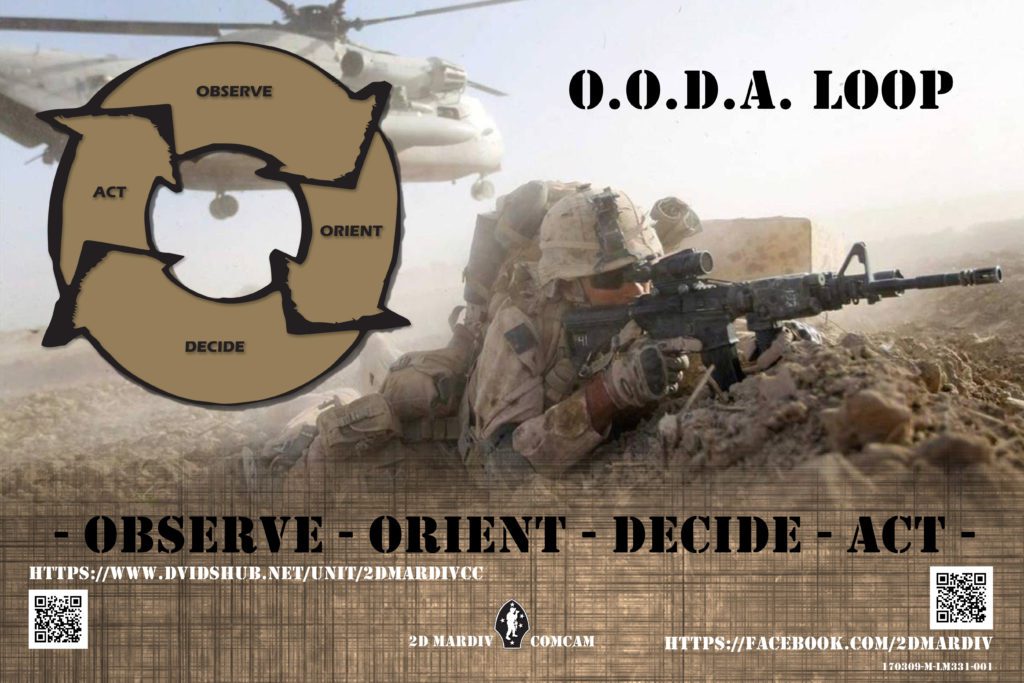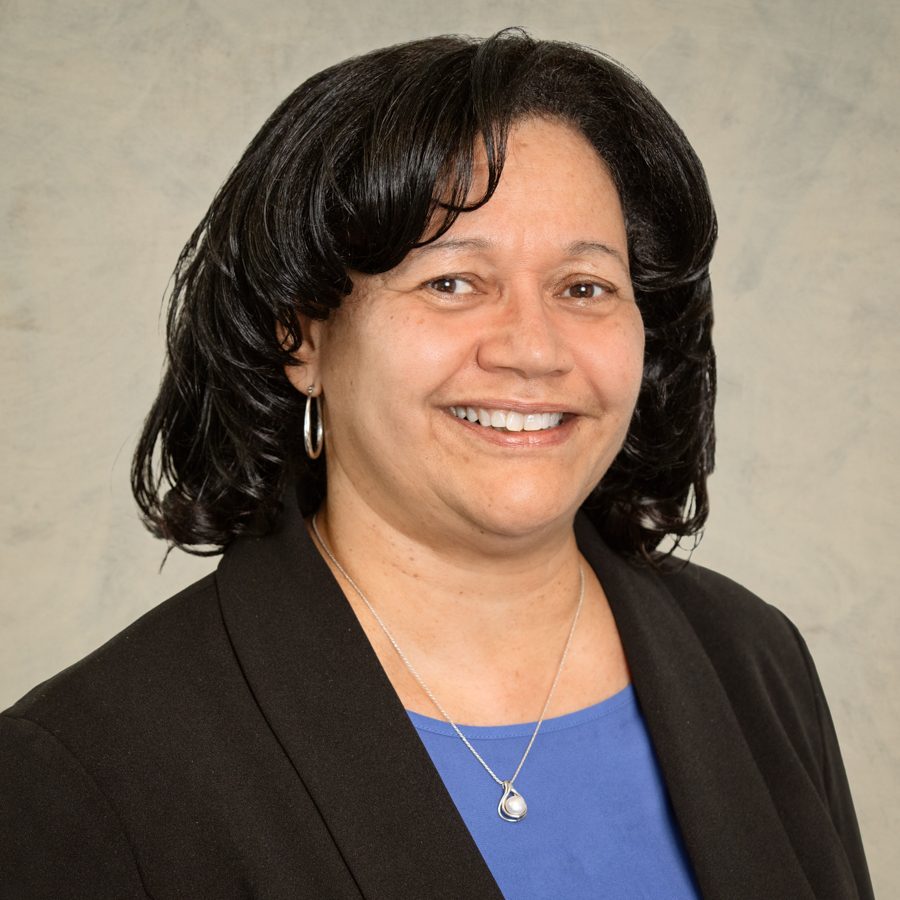
Dr. Charles “C.J.” Johnson-Bey is a leader in electromagnetic technology solutions for Booz Allen Hamilton’s commercial and defense clients. Based out of the company’s Belcamp, Maryland, office, he develops and executes innovative technology strategies that reflect evolving markets and technology dynamics.
Johnson-Bey has more than 25 years of engineering experience spanning cyber resilience, signal processing, system architecture, advanced prototyping and hardware. In leading Booz Allen’s engineering and science community, he inspires leaders and promotes innovation, collaboration and sharing of intellectual capital across the firm.
Prior to joining Booz Allen, he was a research engineer at Motorola Corporate Research Labs and Corning Inc. In addition, he taught electrical engineering at Morgan State University. He also worked at Lockheed Martin Corp. for 17 years, where he galvanized the company’s cyber resources and led research and development activities with organizations including Oak Ridge National Laboratory, Microsoft Research and the GE Global Research Center.
Johnson-Bey is a co-principal Investigator of the National Science Foundation’s Engineering Research Visioning Alliance, which identifies bold and societally impactful engineering research directions that will place the U.S. in a leading position to realize a better future for all. He serves on the Whiting School of Engineering Advisory Board at Johns Hopkins University and the Electrical and Computer Engineering Advisory Board at the University of Delaware. He is also on the Cybersecurity Institute Advisory Board for the Community College of Baltimore County.
Johnson-Bey received both an M.S. and Ph.D. in electrical engineering from the University of Delaware and a B.S. in electrical and computer engineering from Johns Hopkins University.

…
As a cybersecurity leader focused on Navy-Marine Corps clients and cross-market research and development, Jandria Alexander guides the implementation of innovative, technology solutions that drive transformational business growth. She’s a subject matter expert on cybersecurity engineering and assessments, resilient platforms and space systems, infrastructure, and multidomain mission systems.
A nationally recognized cybersecurity expert, Alexander has participated in several National Academy of Sciences studies related to cybersecurity research and new aviation technologies. In 2014, she was appointed by former Virginia Gov. Terry McAuliffe to serve on the bipartisan Virginia Cyber Security Commission to expand the state’s economic footprint in cyber technology and protect critical infrastructure from cyber threats. She led the effort’s unmanned systems cybersecurity industry, government and academia consortium.
Over the length of her career, Alexander has provided cybersecurity and digital transformation leadership, market strategy and solution development for the Department of Defense and the intelligence community as well as many civil and commercial organizations. Prior to joining Booz Allen, she was a cybersecurity leader in engineering and technology at a federally funded research and development corporation.
She holds a B.S. in computer science from Brandeis University and an M.S. in information systems from American University.
Johnson-Bey and Alexander discussed unmanned systems’ technical and operational challenges with Senior Editor Richard R. Burgess.

With the Navy’s Project Overmatch in progress and having released its Unmanned Campaign Plan, what is the nature of some of the technical challenges the service is trying to overcome?
JOHNSON-BEY: There’s always an accelerated trend of technology that catches us by surprise, with technology being used in an unexpected way, creating a new set of problems. In cyber, for one example, when you get things too integrated, you actually introduce some vulnerabilities that you hadn’t thought about before. All these things have multi-dimensions to them. I like being in this space, because there’s always a new problem to tackle and it challenges you to think outside the box. And the more we collaborate on these challenges, the smarter we get.
Unmanned maritime systems seem to bring more challenges, from preventing boarding to cyber intrusion and keeping communications, navigation and targeting networks open. How can command and control be sustained in a communications-denied environment?
JOHNSON-BEY: A new book that came out in mid-March — “2034: A Novel of the Next World War,” [by Elliot Ackerman and U.S. Navy Adm. James Stavridis] — talks about the future, 2034, and war in the South China Sea. It talks about cyber and how we handle it. The Chinese have a capability that we did not expect and that wipes out our comms. How do we deal with that? The reason why I bring that up is because it forces you to think about how we’re pushing ahead with new technology, but what if something just comes out of the blue and we have no comms? The new technology we’ve become reliant upon to carry out missions is suddenly not available. For example, the F-35 [strike fighters] are taken over [by cyber intrusion], the ships at sea are taken over, no comms; so, it’s really interesting.
The U.S. Navy has been thinking about the challenges of operating in a communications- or GPS-denied environment. What do you think of these challenges?
JOHNSON-BEY: A lot of old technology is pretty doggone robust, and it had to be. So, we can’t get too far ahead of ourselves. I’m a technologist through and through with a Ph.D. in electrical engineering. I’ve been doing this a long time. But the thing I will say is that we don’t want to become too reliant on our technology or the latest technology, and I think that’s where innovation comes in. You get innovative when you have constraints. If I don’t have any constraints, then I don’t need to be innovative. I can just do what I want to do when I want to do it. But the U.S. and its allies have long been used to using the electromagnetic spectrum to communicate when they want, wherever they want and for however long they want. That’s no longer going to be the case. So, we really do need to think about how we complete the mission in a denied or congested environment. The solutions might not be brand new technology but might be an innovative use of some technology that we’ve had in the past.
Security [of electronic systems] is always an issue and we really look at it from that OODA [observe, orient, decide, act] loop. How do we increase the speed of decision-making for U.S. forces and our allies and decrease if for our adversaries? Part of that is to address it from the OODA loop in the constrained or denied or congested environment. The speed of decision-making saves lives. So, we’re developing and investing in technologies that are looking at the security in that space. We’re also looking at swarms in that space, distributed platforms, AI [artificial intelligence], distributed processing and processing at the edge. So, we are investing in those areas. Jandria [Alexander] actually has led one of our projects in there last year.
ALEXANDER: The key point to your question is what happens in war. We can leverage alternate communication systems, but our goal is the communications at the tactical edge, from platform system to platform system.
As mentioned, complexity and threats increase with mission operations and communications across multiple UAVs groups, as well as unmanned and autonomous systems across domains. Platform systems in air, ground or undersea are critical part of force operations. As such, rapid data processing or sensor and RF data become differentiators. We’ve focused on increasing autonomous processing in a secure manner at the tactical edge and secure cross platform communications, whether they be large or small. If we can provide edge processing in a fashion that’s secure, design against a common architecture that’s driving our solutions, and be able to add advanced artificial intelligence and machine learning algorithms to process different data sets, in an extensible and modular fashion, we are able to efficiently increase capabilities without having to rebuild complete systems from scratch.
From an operational perspective, we’re able to respond quickly based on the algorithmic results processed on the platform. In a world of increased connectivity, cybersecurity needs to be addressed as an integral part of all architectures and built into the systems, including edge systems. Integrated security provides functionality and assurance that we can detect anomalies in parameters and processing that could throw off the compute cycle and exhaust the local resources degrading or disabling necessary platform functionality. And all of a sudden, we get into a situation where we can’t operate. So, we want to be able to make sure we monitor those inputs, and we look for anomalies in the different types of data input. Once we do that, we can be a little more confident about the processing that’s occurring at the platforms.
For each area in platform systems — communications, processing, algorithms and cybersecurity — there are technologies and best practices that support optimal and modular system development. Booz Allen has taken that problem set and divided it into the various functions bringing subject matter experts together into cross-functional project teams. The resulting systems are then able to incorporate integrating our solutions, third-party solutions and government solutions.
What is edge processing?
ALEXANDER: Platform systems range from manned to unmanned systems, including very large airborne to undersea platforms of various sizes. The platform systems have various sensors and functionality to support the mission. As data is collected on the platforms, edge processing allows for rapid analysis, decision support and specific maneuvering locally without having to transmit the data to a data center for central processing. During contested operations, the tactical asset is the edge. We want to be able to make computing decisions and react to those computing decisions based on what occurs at the edge for onboard sensors on the unmanned system as opposed to sending all the data back to a ground system. The local processing enables autonomous operations at the edge.
JOHNSON-BEY: Getting into denied environments, you’ve got to get innovative, so if you cannot get back to the [data] cloud or if you cannot get [the platform] back or time won’t allow, how do we do that computing right where you need it with information that you need to get the mission completed?
Does this create a weapons release authority problem for the man in the loop if you don’t have the central command there to some degree?
ALEXANDER: That’s right. So, we have to be flexible. We have to recognize that there’s a combination of manned and unmanned systems and decision points. As we become more comfortable and have more results and training our confidence and ability to trust the behaviors [of the unmanned systems] will increase. During situations where the volume of data and the need for rapid decisions are critical, edge processing and autonomy provide options that were not previously available. Systems have matured little by little. It’s not going from totally manned to totally unmanned, but it’s that combination, human in/on the loop, where there’s a recommendation and acknowledgment and recommended course of action.
JOHNSON-BEY: I’ve heard the term “human on the loop” instead of “in the loop.” [Humans] are “on the loop,” where they’re helping to make the decisions as needed. But the way things are moving, we need to be able to, in some instances, operate at the speed of computation because — particularly with things like hypersonics or getting so much data — when you look again at that OODA loop, it could just be that you can’t make a decision fast enough, so you’re going to need some AI and autonomy. You’re going to have some overall decision-making, but you are going to have to have some trust or some delegation of the ability to complete a mission done at the edge or where communication is congested or denied.
ALEXANDER: The other point is, it’s not only the speed but it’s also the volume. We have much better sensors right now. We’re collecting so much data that the time to process has to rely on automation. We have to figure out ways to streamline and synthesize the data to make decisions. Credibility of data also is an aspect. We want to be able to weigh the sources and understand which inputs are most trusted to rate and weigh the results. We need AI/ML [machine learning] algorithms that have been trained on actual and synthetic data sets. In an ideal case, the data processing is based on rich data sets, where we have full information; in the worst case, we have limited and lower quality information. The challenge is to develop an edge processing capability that can optimize operations.
JOHNSON-BEY: One of the things we’re investing in is, for example, the project that Jandria’s been working: platform agnostics, so a system can go on an unmanned aerial system, an unmanned underwater system, an unmanned surface system or an unmanned ground system. That unmanned piece is going to grow if the Navy wants to reach 355 ships or that next-generation Navy capability. So, what we’re looking at is how do we help a naval system grow into the unmanned space so that we can advance our capability, ability to make decisions and our ability to complete the mission with the unmanned aspect.
ALEXANDER: That brings up another good point. Large aerospace satellite systems, for example, used to take 20 years to build and deploy. We are transitioning to building constellations with disaggregated functionality. The key is to build smaller satellites — with more specialized function — that collectively perform complex missions. As we break up functionality, we build systems faster. They can be simpler and more secure. We can then integrate those data outputs from the various functional systems to support advanced decisions and assorted missions. Every platform doesn’t have to be all or nothing across every domain. Edge processing can also help with collecting additional or specialized data sources. Specialized platform systems can collect the unique data source provide it to the processing platform and then as the data gets synthesized, the mission advances.
Are micro-satellites part of the solution?
ALEXANDER: Absolutely. We have many examples in communication systems, with platforms that perform certain functions but may be perishable in the long term and don’t persist beyond short-term operations. As disposable assets, we don’t need them to be as rigorous.
How is your company supporting Project Overmatch and other programs?
JOHNSON-BEY: Project Overmatch is something that the Navy is focused in on and that goes everywhere from networks like the tactical grid to the infrastructure that deals with computer storage and tech stacks to the data architecture and then the tools and analytics like AI and ML and those different applications. So, what we’re focusing in on and investing in are these specific areas so that we can get some minimum viable products out. As the Navy grows its capabilities, we’re going to be able to provide some of these solutions to them. And then, as we all get smarter, we will continue to improve. It’s about speed, getting something useful out quickly, something I really do believe saves lives. So, we’re focused on being able to make decisions quickly, to field things quickly, to be very nimble in order to get from idea to deployment efficiently. We’re looking at how do we do things in a very quick way and demonstrate it in the marine environment and in the environment in which it will be used. We’re also looking at the challenge in a multi-domain aspect and how to create products to help the Navy complete its missions.
ALEXANDER: So, we’re tracking Project Overmatch very closely. This includes solutions for the enterprise as well as the tactical edge. The tactical edge is exactly the piece we’ve been talking about — the edge processor — that is one piece of the overall architecture and mission. Beyond the technology, is how the technology is integrated into legacy as well as future systems, as well as the training and the governance around it. Those are other parts that will drive adoption ultimately resulting in more successful mission capabilities.
Where is your company’s support to the Navy directed?
ALEXANDER: We support all the Navy echelons. We support the warfare centers focused on technical solutions and prototypes. We support program offices across Navy System Commands, the Echelon II systems commands — Naval Information Warfare Systems Command [NAVWAR], Naval Air Systems Command, Naval Sea Systems Command. Overmatch is certainly one of those programs that is occurring at all of the levels.
JOHNSON-BEY: One other thing to drive home is that we also are working with the Office of Naval Research [ONR]. We have multiple programs there and we are looking to increase our collaboration with them. We think that is certainly important. That’s where you start getting in with the new ideas, new capabilities, the innovation, and we think that’s a perfect place for us to be. We do a significant amount of work with ONR today, and we’re looking to increase that as well as with the warfare centers but particularly with ONR. Fun fact: Our relationship with the Navy goes back 80 years continuously.
ALEXANDER: We are engaged with our clients to provide thought leadership and diligent execution. Critical initiatives have many aspects. There’s often a policy piece, an acquisition piece and a solution piece. We want to make sure that our solutions align with the missions and provide enhanced operations and that the policies consider all of the various stakeholders and the overall strategic intent. We collaborate across our program and functional teams to address mission requirements. This allows us to leverage the perspectives that are needed, collect lessons learned and bring our innovation leads to solve the emerging problems of our clients.
- Insitu Going Strong at 30, Focusing on Maritime Operations - April 8, 2024
- Navy Awards Boeing Additional Funds for MQ-25 Drones for Testing - April 3, 2024
- Benign 4th Fleet AOR Useful for Unmanned Vehicle Operationalization, Admiral Says - March 27, 2024




